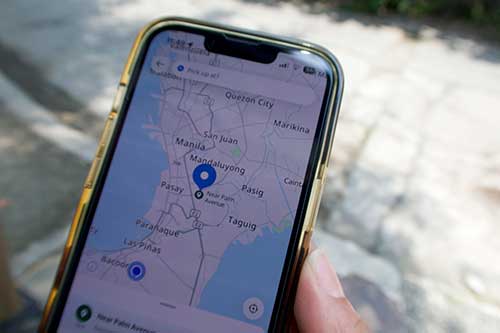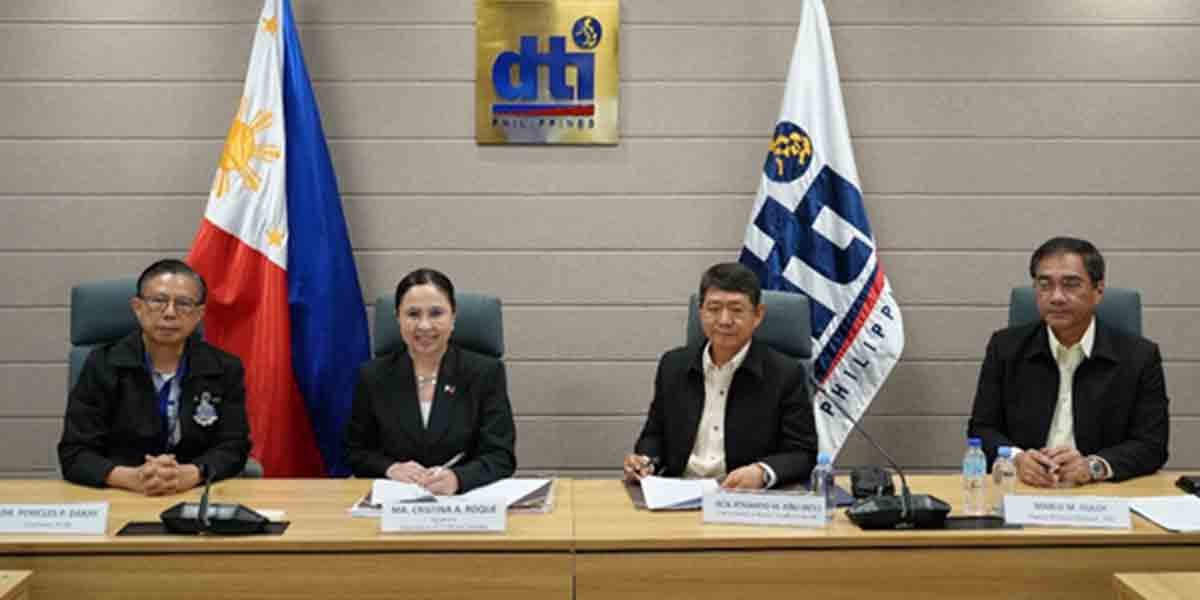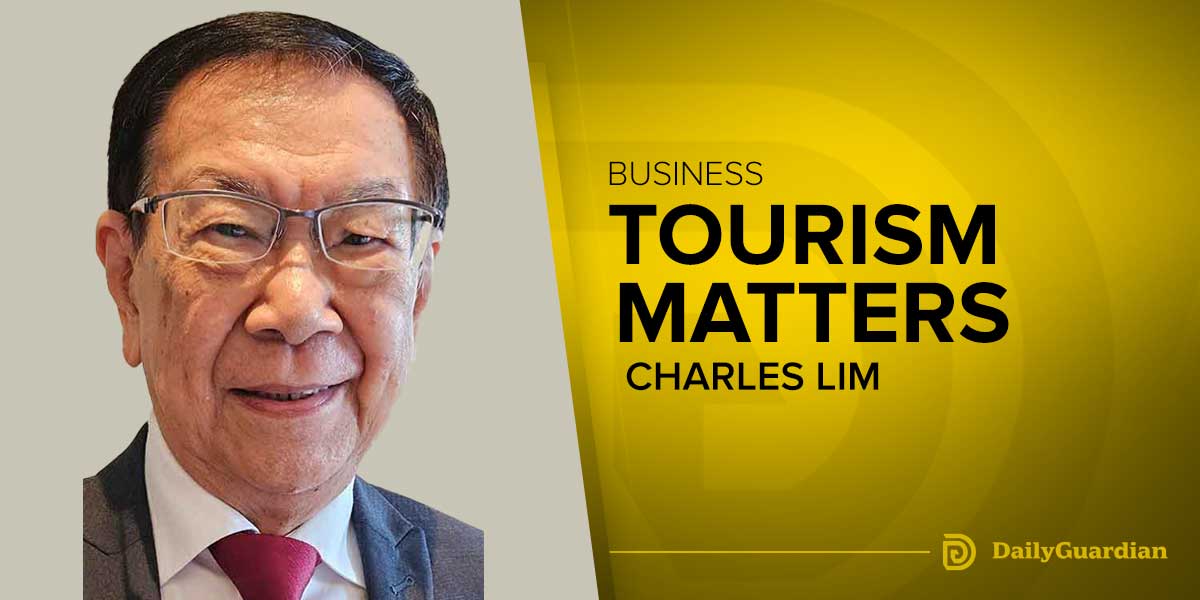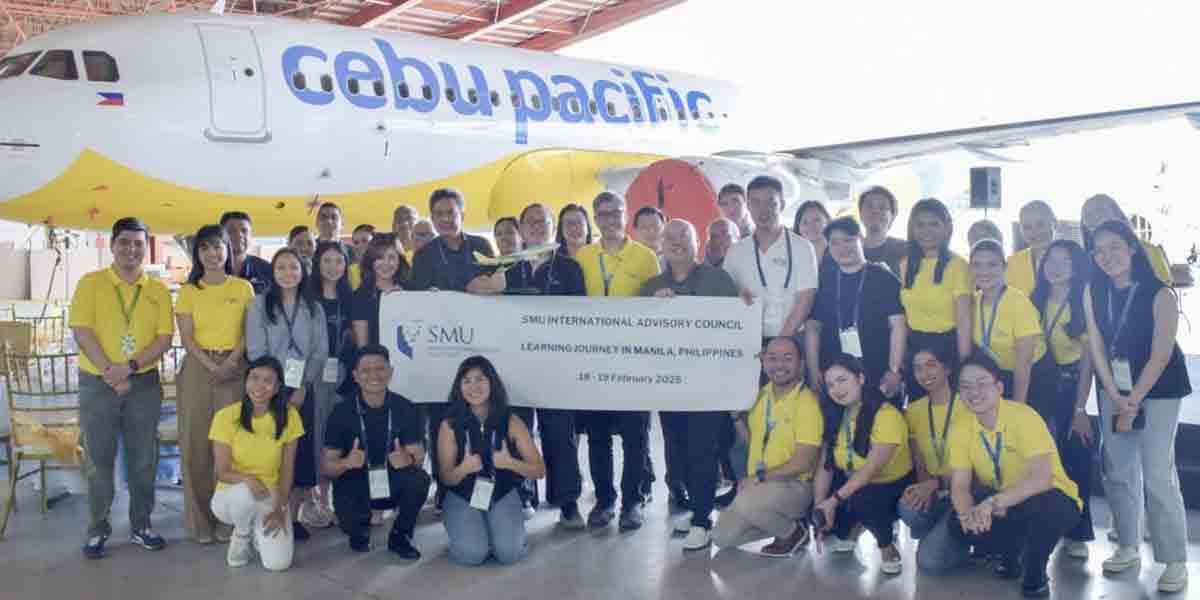
By Karol Ilagan and Federico Acosta Rainis
Philippine Center for Investigative Journalism
Key findings:
- Transportation giant Grab offers a convenient alternative to navigating the country’s busy cities – but at a premium.
- Data collected by PCIJ showed that rides of the GrabCar service always included surge fees, the additional cost computed by an algorithm to get more cars on the road. However, the data also suggested that customers still often endure lengthy wait times even when fares were
- In 2018, antitrust officials cautioned about the potential harmful effects of Grab’s acquisition of the Philippine operations of Uber, its only credible rival then. Six years later, Grab’s market dominance remains unchallenged.
- Since buying out Uber, Grab has been penalized and fined a total of P86.7 million for violating its merger deal commitments, particularly on pricing.
- Regulators are not fully aware of how Grab’s algorithm works. Without guardrails, these are prone to abuse, experts say.
Rica Torres, 37, used to take a Grab car almost every day to take her six-year-old son to and from school. The app-based service was more convenient than riding a jeepney, a tricycle, and crossing an overpass.
“I don’t want my son to go through all those because it saps his energy or sours his mood. He should be in high spirits and excited for school, but because of the commute, he might not look forward to studying anymore,” the mother of two said in a mix of English and Filipino.
Torres took taxis from time to time, but she often avoided them because of drivers known for gouging passengers with high fares. “Hangga’t maaari, Grab ‘yung kinukuha namin (Whenever possible, we always take Grab),” she said.
The Torreses’ experience is a common example of what it’s like to navigate Metro Manila. Notorious for its poor public transportation, the metropolitan region composed of 16 cities and a lone municipality had the world’s worst metro traffic in 2023.
A traffic index found that a motorist spent 240 hours driving on average last year, with almost half of that time stuck on the road. So, when ride-hailing firms like Uber and Grab entered the Philippines, they thrived. The service they offered simply made sense for commuters like the Torreses.
But the family’s travel routine wasn’t sustainable. While their home is only seven kilometers away from school, booking a GrabCar ride meant leaving very early to avoid rush hour. They also spent at least P600 a day on the app alone. That’s roughly the minimum daily wage in Metro Manila.
Torres said she used to pay Grab about P270 going to school and roughly P290 going home at the start of the school year. A few months later, she noticed the fares rising to P310 and to as high as P350. She couldn’t understand the increase when she and her son took the same route every day.
At one point, Torres got curious. She checked the receipt sent by the Grab app to her email, but she had no way to verify the amount.
“I didn’t have any basis or a reference to compare the fare, whether it could still go down or if there’s anything I could contest, so I just let it be. Besides, I didn’t really have another choice. I would take it (Grab) anyway,” she said.
For years, Grab’s seemingly steep fares driven by surge pricing have become a common commuter woe. Because no other firm has been able to threaten Grab’s dominance in the four-wheel transport network vehicle service (TNVS) market, customers are often left without other options. As of April 2024, there are 23,000 TNVS units, and majority of those are Grab’s.
Behind Grab’s multi-billion dollar business is its data and algorithm-based approach to matching drivers and customers. This is how it is supposed to work, according to Grab: “When demand outpaces supply, the higher fares help to signal for more driver-partners to turn on their apps and join the flow.”
The idea makes sense. After all, Grab offers a service that isn’t the same as those offered by taxis, for instance. But the lack of transparency on how its algorithm defines surge rates has left many customers like Torres baffled.

While the inputs and outputs of an algorithm are often known, the process that turns the input into output is unknown. In the case of Grab, the firm uses driver and customer data to derive the surge rate. But how it computes those rates is unclear.
To test and learn more about how this algorithm works, PCIJ collected Grab’s pricing information (link to Methodology) by attempting to book rides for 10 routes across Metro Manila nearly every hour from 6 a.m. to midnight for one week. PCIJ also obtained data from Grab’s Farefeed application programming interface (API) every 15 minutes every day for the same routes during the same period.
Our investigation revealed that GrabCar rides always included surge fees, and when fares were high, waiting times did not always become shorter. The data suggested that the algorithm behind surge pricing did not always work the way Grab had advertised it to work. Customers still often had long wait times even when surge rates applied.
Since its founding in 2012 by Harvard Business School graduates Anthony Tan and Tan Hooi Ling, Singapore-based Grab has become a multinational company. Originally designed as a ride-hailing app, Grab has since expanded into a “super app” offering food delivery and mobile wallet services. In the Philippines, Grab’s local subsidiary is MyTaxi PH, a homage to the app’s original name, “MyTeksi.”
Pricing probe still pending
Lawyer Ariel Inton was not surprised by PCIJ’s findings. It reflected the same complaints that his organization, the Lawyers for Commuter Safety and Protection, has been receiving.
In 2022, the lawyers’ group raised questions about Grab’s surge fees along with other pricing concerns to the Land Transportation and Franchising Regulatory Board (LTFRB), the government agency that regulates public transport utilities. They wanted to know how Grab’s surge rates were determined.
There is still no information about how the LTFRB will resolve the questions about surge pricing. PCIJ’s interview and records requests with the agency have not been granted as of posting time. LTFRB only acknowledged our letter.
Inton said his group filed a motion to resolve the matter in January. There has been no news since.
“Two Christmases passed by already and there’s still no decision… We want to know when the surge [charges] should be implemented. Our focus then was that Grab supposedly applied surge charges because of supply and demand. But is it true every minute of the day? What we’re telling the LTFRB was for them to define surge. There has to be a limitation,” Inton said.
Ronald Gustilo, spokesperson of advocacy group Digital Pinoys, said he didn’t think the LTFRB was able to check how the Grab algorithm worked because of the fact that a complaint about it had been filed.
“The fact that they are not addressing the complaint only shows that they don’t really know how or when surge pricing should be activated. Grab always says it depends on supply and demand, but in the first place, how do we know if there are indeed fewer drivers,” he said.
In a written reply to PCIJ, Grab’s Philippine operations said it had “fully cooperated with the LTFRB’s inquiry” by participating in the hearings. “We remain committed to working with the LTFRB and other regulatory bodies to ensure our pricing mechanisms are fair, transparent, and compliant with all regulations,” the response stated.
Grab said it “strictly follows the fare matrix” set by the LTFRB, which includes provisions for surge pricing. The company also claimed that fares were shown upfront on the app “to provide transparency and allow for informed choices.”
The infographic below shows the information provided by Grab upon booking and when the ride is completed. The cost given by the app can indeed be broken down using the government-approved fare matrix, but only up to a point.

Like other modes of public transportation, Grab’s fare is a combination of the base fare (P45) and increments based on distance (P15 per kilometer) and duration (P2 per minute). But unlike jeepneys, buses, and taxis, the company applies “surge pricing” that is supposed to be based on supply and demand. This part is opaque.
Grab had applied surge rates even before the guidelines for TNVS were drawn up, said Inton, who used to serve as board member of the LTFRB. When the LTFRB stepped in, surge pricing was retained in addition to the standard base fare and distance and duration rates. The LTFRB approved a surge that could only be up to twice the cost per kilometer and per minute.
Data: Grab rides always include surge fees
PCIJ’s data gathering yielded 1,328 data points from the Grab app and 6,720 through Grab’s fare check API. While our collection represented a small portion of the ride-hailing firm’s data, it offered useful insights into the inner workings of its algorithm.
Across all the rides we tried to book that week in February, data showed that surge charges were always included in the fares. Following Grab’s explanation, this suggested that booking requests always exceeded available cars nearly throughout the entire day – even early in the morning and late in the evening, even on weekdays and weekends. But it’s difficult to find out if demand did outpace supply because only Grab has access to this data.
According to data obtained from the app, the surge multiplier averaged at 1.51 times taking into account the rates for distance and duration of all the rides we had attempted to book. The rate tended to be in the lower range for a few hours in the morning.
The lowest surge multiplier we found was 1.19 times and the highest, 1.98 times, or almost twice the per-kilometer and per-minute cost. This is the maximum surge rate allowed by the LTFRB.
The surge charges customers paid for trips significantly differed depending on where they got picked up, the data showed. Passengers from Makati, Taguig, Las Piñas City, and Pasig paid higher surge rates on average. Meanwhile, lower multipliers were recorded in pick-up locations in Manila, Parañaque, Pasay, and Valenzuela.
For example, a six-kilometer ride from Makati to Taguig on Feb. 17, 2024 at 5 p.m. cost P381. Without a surge, the ride should cost about P215. The estimated surge rate was P166 or 1.98 times the distance and duration fees. The surge fees on this day ranged from 29% to 44% of the whole fare.
Roughly the same trip distance within Valenzuela on the same date and time incurred a P64 surge fee. This was 1.5 times of the per-kilometer and per-minute cost. Grab charged P239 on the app. The surge fees on this day ranged between 23% and 31% of the entire fare.
Verifying app fares with API data
As a way to verify, we compared the data collected manually from the Grab app with the data collected via Grab’s fare check API. The online tool as shown below provided estimates of the minimum and maximum fare and the duration of the trip.

When compared, the app fares were consistently above the minimum fare approximated by Grab in its own fare check page. This supports the finding that the rides PCIJ tried to book on the app always incurred surge fees. Moreover, it tended to be on the high side.
The chart below shows that each booking (see black line) was also close to or more than the maximum fare estimated by Grab across the 10 routes.
API data: No surge?
Based on data collected from Grab’s fare check API, the company tagged each ride as “high surge,” “low surge,” or “none.” The same notices are not shown on the app, although it sometimes prompts customers to “beat high fares by booking later.”
Nearly two in three rides had a “None” surge notice in the API data, while the remaining rides were mostly “high surge” with a few “low surge”. This was inconsistent with what we found on the app where the surge fees were always added. Based on our data, there was always an extra amount charged on top of the P45 base fare, P15 per kilometer, and P2 per minute costs set by the LTFRB.
Curiously, the Makati-Taguig route in the API data registered a “high surge” throughout the week 24/7, every hour, even past midnight of the research period.
Grab did not directly address PCIJ’s question on why there was always a surge, but it did say that surge pricing was not predetermined by time but by real-time conditions.
“The discrepancy in surge notice(s) may result from variations in demand and supply at specific times and locations. The ‘High,’ ‘Low,’ or ‘None’ indicators are dynamic and can change rapidly as the system continuously processes new data to maintain balance and efficiency,” Grab said.
Grab added that its algorithm took into account a variety of factors, including traffic congestion, geographic location, the supply of drivers, and demand for rides.
“It operates dynamically to ensure that fare adjustments reflect the real-time market conditions. Surge is not manually set, but run by a real-time algorithm,” Grab wrote.
Gustilo, for his part, said that because algorithms are programmed by people, they need to be checked. Decisions driving their design will affect those who use the technology, he said.
Like Inton, Gustilo has been on the receiving end of complaints from both customers and drivers using the app. He himself found surge pricing puzzling as he had done his own fare monitoring. One time he checked the rate from his location to a destination hourly, from 5 a.m. until midnight. The data he collected showed that prices did not change much throughout the day, which led him to think that either no surge pricing was in effect or there was always a surge the whole day.
“My point is, is Grab always on surge all day? Which is the same question asked by many passengers. Kasi nga, sobrang mahal na mag-Grab ngayon e (Taking a Grab now is so expensive.) Grab’s justification with surge pricing is demand. But drivers tell me, ‘Matumal ‘yung biyahe.’ So how do you reconcile that?” he said.
Does surge pricing get more cars on the road?
According to Grab Philippines, surge pricing is “an industry-accepted, sophisticated and scientifically developed algorithm-based feature driven by real-time supply and demand dynamics.”
“It ensures optimal allocation of resources by incentivizing more driver-partners to meet high demand, thereby enhancing service reliability. This mechanism is similar to economic principles applied in various sectors to balance supply and demand effectively,” the firm added.
If the algorithm was working as Grab had advertised, wait times should stay the same or become shorter when surge pricing took effect. However, relatively high surge multipliers lasted several hours without reducing wait times, the API data showed. This was not helpful for commuters because to realize a significant drop in the fare, they would have to wait much longer.
For example, on Feb. 20, 2024 (a Tuesday) from midnight to 11:45 p.m., the Makati to Taguig City route recorded a notice of “High Surge” the whole day. The estimated average wait time was 3.4 minutes that day. It peaked at 11 minutes at 7:45 a.m., but didn’t go back to the average until 10 a.m. From 3:15 p.m. to 9:45 p.m. on the same day, the wait time averaged at four minutes. It wasn’t until past 10 p.m. when wait times generally dropped to a minute or two.
Statistical analyses conducted by PCIJ did not yield conclusive results. The routes exhibited both positive and negative correlation between surge rates and wait times, which suggested that surge pricing did not always work to improve service quality, measured roughly as a reduction in wait time.
The routes that resulted in a positive correlation were pick-up points in the central business districts like Makati and Taguig. The surge rate and wait times in these areas tended to go in the same direction. It could be inferred that customers in these cities ended up waiting for a long time even with surge pricing.
Meanwhile, some routes did result in a negative correlation, meaning higher fares could be associated with shorter wait times. However, they were not substantial, which could mean that surge pricing had a minimal effect.
Grab acknowledges PCIJ finding
Sought for an explanation, Grab confirmed that surge rates could become “prolonged.”
“In some cases, high demand periods may persist, leading to prolonged surge pricing. The aim is to attract more drivers to areas with high demand, thereby reducing wait times over time. Continuous adjustments are made to ensure optimal service delivery,” Grab wrote in its response.
The firm said surge pricing was designed to address supply-demand imbalances but was not a static solution. The duration and impact of surge pricing depended on factors such as driver availability, demand surges in specific locations, and traffic congestion, it said.
On May 28, 2024, about a week after PCIJ wrote to Grab, the ride-hailing company was reported as asking the government to increase the number of TNVS vehicles in Metro Manila back to the pre-pandemic level of 65,000 to keep up with growing demand.
“Grab is struggling to serve the ride-hailing demand in Metro Manila, lamenting that TNVS supply is short of the pre-pandemic high of 65,000. The TNVS supply is around 40,000 slots as of end-2023,” PhilStar.com reported.
Persistently long wait times could also mean that drivers were not encouraged by surge pricing. At least a dozen drivers interviewed by PCIJ said that they didn’t necessarily go to “surge” areas or the areas marked red on the app map because that would mean getting stuck in traffic.
They simply relied on the “bato” or the booking provided by the app, the drivers said. They spoke to PCIJ on condition of anonymity for fear of retribution.
Unchecked algorithms
PCIJ reached out to four relevant government agencies to learn more about how algorithms are regulated. Of the four departments, only the Department of Information and Communications Technology (DICT) and the Philippine Competition Commission (PCC) responded.
PCIJ has sent several requests and made follow-ups to the LTFRB since November 2023. The letters were acknowledged but not addressed. We wanted to ask the transport regulator about the status of its surge pricing inquiry and other related regulatory concerns.
The Department of Trade and Industry’s Consumer Protection Group asked for and was given a list of interview questions but did not respond to our request.
Only the DICT agreed to an interview. Assistant Secretary Philip Varilla said the department did not have a regulatory framework for ride-hailing applications. Its focus is on information shared by customers, he said.
“Our attached agency, the National Privacy Commission, does some Privacy Impact Assessment. Basically, it is in relation to personally identifiable information. And with cybersecurity, we have our Cybersecurity Bureau, and they follow our Cybercrime Prevention Act, the National Cybersecurity Plan, as well as the Consumer Act of the Philippines to protect consumers. So, as for a regulatory framework specifically for ride-hailing applications, we don’t have one,” he said.
Making algorithms accountable
In the absence of regulations about algorithms, risks abound, according to experts.
Dominic Ligot, co-founder of social impact technology company CirroLytix, said that while the Data Privacy Act and the Cybercrime Law cover abuses using technology or abuses on data, they do not cover algorithmic bias or algorithmic abuse. New laws are needed to cover algorithmic liabilities, he said.
Apart from legislation, designing an Algorithmic Impact Assessment or AIA might be helpful, Ligot said. It’s similar to the Privacy Impact Assessment under the Data Privacy Act. PIAs are a checklist of data being gathered, how they are processed, and who’s going to be accountable when there’s a data breach, for example.
An AIA can be a checklist that includes risks posed by an algorithm, among others, Ligot said.
“Let’s spell it out. And then if we’re comfortable with the risk, sign, so that later if it blows up, ‘Okay, wait, who assessed this? And then we learn.’ At the bare minimum, we should have something like that for accountability and transparency,” he said.
This problem is not unique to Grab. Ride-hailing companies in other countries, like Uber, have been criticized for using surge or dynamic pricing to make a profit instead of managing supply and demand.
Researchers have warned against algorithmic abuse in cases where companies raise surge rates more frequently than required due to weak regulation or the lack thereof.
The Organization for Economic Co-operation and Development (OECD) for instance has highlighted concerns about the widespread use of algorithms in digital markets exhibiting characteristics that may lead to anti-competitive behavior.
Grab’s market dominance remains unchallenged
Grab not having a competition adds another layer to the problem.
In 2018, the Philippine Competition Commission cautioned against Grab acquiring the Philippine operations of its lone and credible rival, Uber, stating that it would undermine competition. But the antitrust body later cleared the merger when Grab committed to address service quality and transparency concerns. Six years later, Grab’s market dominance remains unchallenged.
Indonesian ride-hailing startup Go-Jek, the only potential competition to Grab, tried several times to enter the Philippine market, but faced numerous roadblocks.
The LTFRB in August 2018 imposed a moratorium on new applications from ride-hailing platforms, saying it needed to review the effect of the cap on the pool of the 65,000 approved TNVS units.
Go-jek re-applied several times but was rejected because of the 40% foreign ownership limit for public transport services, according to Bloomberg.
The Philippine Constitution requires companies to be least 60% Filipino-owned to operate public-utility services. Go-jek has a local subsidiary, Velox South-East Asia Holdings, but only about 20% of it was reported to have been owned by a Filipino shareholder.
Go-jek’s car-hailing unit, Go-Car, helped push Uber out of Southeast Asia and outgrew Grab as the most popular ride-hailing service in Indonesia, the Financial Times had reported.

Grab violates commitments
Since the 2018 merger, the PCC has been looking into Grab’s operations and issuing penalties on the company because of its failure to comply with its commitments, particularly with pricing issues.
The PCC explained in a written response to PCIJ’s queries that in principle, Grab must keep fares within a range as if a competitor like Uber were present in the market.
Asked how it monitors Grab’s compliance with its merger deal commitments, the PCC said it tracked Grab’s compliance through third-party monitors using reports generated by Grab. Grab submitted quarterly reports to the PCC.
The PCC, in turn, furnished the monitor with copies of these reports. The monitor then informed the PCC of its assessment, including any findings of non-compliance. (The PCC declined PCIJ’s request for a copy of the quarterly monitoring reports because these are supposed to be “confidential.”)
The PCC said it had penalized and fined Grab for violations of its commitments in multiple instances. Fines have totaled P86.7 million over the years since the merger. The amount includes a P16 million fine in October 2018 for violating key provisions of the Interim Measures Order (IMO) during the merger review period and a P9 million fine in February 2023 for providing incorrect and misleading information in compliance reports and failure to comply with PCC orders.
The PCC has also ordered Grab to refund a total of P25 million to its riders for violating price monitoring commitments. Of this amount, P4.7 million will be remitted to the National Treasury because it was not claimed by eligible Grab riders.
According to Grab, all fines have been paid in full and on time, but the PCC clarified that Grab had yet to settle a P16 million fine, which is the subject of a petition for review before the Court of Appeals.
However, the PCC pointed out that Grab’s commitments to service quality and fare transparency have expired and were no longer being monitored by the PCC. The only remaining commitments under monitoring, it said, were about non-exclusivity and incentives. These pertain to drivers who are not supposed to be tied to just one ride-hailing company.

“Digital ride-hailing services, both four-wheeled and two-wheeled, are just one segment of the entire transportation landscape. The sector remains competitive, with numerous players and options available to the public. Grab’s acquisition of Move It does not alter the conditions that have contributed to the competitiveness and dynamism of the transportation sector,” Grab claimed.
While it’s true that there are several other players in the Philippines, none have the financial and technical resources to threaten Grab’s market dominance.
Apart from legislation and setting up AIAs, the government needs to foster innovation, especially now when there isn’t much incentive to build competing apps, Ligot said. If there are no incentives, the Philippines will be beholden to foreign companies, he said.
“Grab had this first-mover advantage. Or rather second. Uber came first. And you can see how it really shredded the taxi industry. Partly because of the taxi industry also. It’s an ugly experience, right? They rig the meter. It’s inefficient. Suddenly, an algorithm comes and makes it efficient. But now we’re hostage to the algorithm,” he added.
That’s a hard pill to swallow for many commuters, drivers, and riders to whom ride-hailing apps have become a lifeline.
Torres’ family eventually decided to move to a place near the son’s school. She no longer takes GrabCar every day.
But she still takes it whenever she’s with her kids or family. “I would rather that I take Grab. (One main reason) is the traceability, in the event something happens,” said.
She’s hoping for alternatives.
“Hopefully, once my kids are a bit older, maybe they can take a cab instead. But for now, that’s not the case yet,” the mother said. –PCIJ, July 2024
This story was produced by the Philippine Center for Investigative Journalism in partnership with the Pulitzer Center’s AI Accountability Network.
The story was reported by Pulitzer Center’s AI Accountability Network fellow Karol Ilagan and data specialist Federico Acosta Rainis.
Jabes Florian Lazaro contributed reporting and research for the article.
Data collection was done by Angelica Alcantara, Jay-ar Alombro, Donna Clarisse Blacer, Lyjah Tiffany Bonzo, James Kenneth Calzado, Gina de Castro, Maverick de Castro, Dominique Flores, Lois Garcia, Guinevere Latoza, Aya Mance, Faith Maniquis, Karmela Melgarejo, Gabriel Muñoz, Arone Jervin Ocampo, Matthew Raralio, Arriana Santos, and Angelica Ty.
Felipe Salvosa II was the lead editor.
Photographs were taken by Bernard Testa. Illustrations were created by Joseph Luigi Almuena.
Data visualizations were designed by Karol Ilagan, Federico Acosta Rainis, and Kuang Keng Kuek Ser.


















